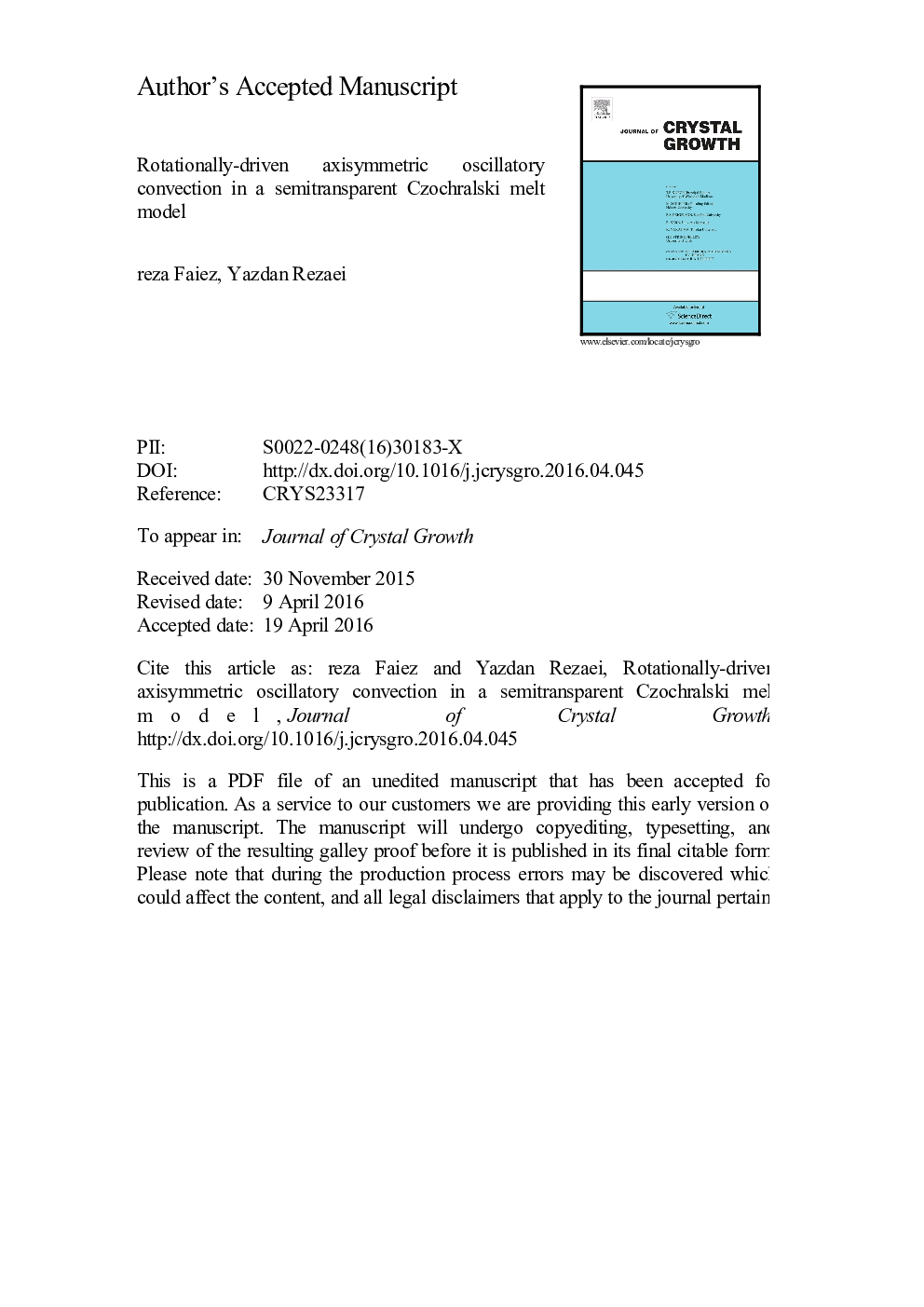| Article ID | Journal | Published Year | Pages | File Type |
|---|---|---|---|---|
| 5489709 | Journal of Crystal Growth | 2017 | 20 Pages |
Abstract
A numerical study was carried out to investigate the effect of surface tension-driven convection on the transition of flow modes in an axisymmetric Czochralski oxide melt model. Computational results were obtained over a reasonably wide range of the crystal dummy rotation rate for the cases with and without Marangoni effect. The transition of the flow from steady-state to an axisymmetric oscillatory one was found to be occurred at a threshold value of the ratio between buoyancy and the rotationally-driven forces, which is considerably smaller in the presence of the Marangoni flow. This was shown that, in the presence of thermocapillary forces, the descending cold plume has a larger impact on the thermal field if compared to the case in which the Marangoni effect was ignored. Depending on the circumstances, each of the two different mechanisms, i.e., the rotating Rayleigh-Benard instability and the baroclinic instability, may play a dominant role in the steady-oscillatory flow transition. Thermocapillary effect on the mechanism of instability giving rise to the transition of the convective flow was studied.
Related Topics
Physical Sciences and Engineering
Physics and Astronomy
Condensed Matter Physics
Authors
Reza Faiez, Yazdan Rezaei,
